I want to connect two SVG points (e.g. the centers of two circles) using arcs. If there is only one connection, the line (<path>) will be straight. If there are two connections, both will be rounded and will be symmetrical, this way:
So, in fact, there are few rules:
- Everything should be symmetrical to to the imaginary line that connects the two points.
From 1, it's obvious that if the number of connections is:
- odd: we do not display the straight line
- even: we display the straight line
There should be a value
kwhich defines the distance between two connections between same points.The tangent that goes through the middle of the elliptical arc should be parallel with the straight line that connects the two points. And obviously, the middle of the line will be perpendicular to the tangent.
I'm struggling to get a formula to calculate the A parameters in the <path> element.
What I did until now is:
<path d="M100 100, A50,20 0 1,0 300,100" stroke="black" fill="transparent"/>
M100 100is clear: that's the starting point (move to 100,100)- Last two numbers are also clear. The path ends in
300,100 - I also saw that if I put
0instead of20, I obtain a straight line. - If I replace
1,0with1,1, the path is flipped.
What I don't know is how to calculate the A parameters. I read the docs, but the imagine is still unclear to me. How to calculate these values?
svg {
width: 100%;
height: 100%;
position: absolute;
}<!DOCTYPE html>
<html>
<head>
<meta charset="utf-8">
<title>JS Bin</title>
</head>
<body>
<?xml version="1.0" standalone="no" ?>
<svg version="1.1" xmlns="http://www.w3.org/2000/svg">
<!-- Connect A(100,100) with B(300, 100) -->
<path d="M100 100, A50,0 0 1,0 300,100" stroke="black" fill="transparent" />
<path d="M100 100, A50,20 0 1,0 300,100" stroke="black" fill="transparent" />
<path d="M100 100, A50,20 0 1,1 300,100" stroke="black" fill="transparent" />
<path d="M100 100, A50,30 0 1,0 300,100" stroke="black" fill="transparent" />
<path d="M100 100, A50,30 0 1,1 300,100" stroke="black" fill="transparent" />
<!-- A(100, 100) B(300, 400) -->
<path d="M100 100, A50,0 57 1,0 300,400" stroke="black" fill="transparent" />
<path d="M100 100, A50,20 57 1,0 300,400" stroke="black" fill="transparent" />
<path d="M100 100, A50,20 57 1,1 300,400" stroke="black" fill="transparent" />
</svg>
</body>
</html>I'm using SVG.js to create the paths.


